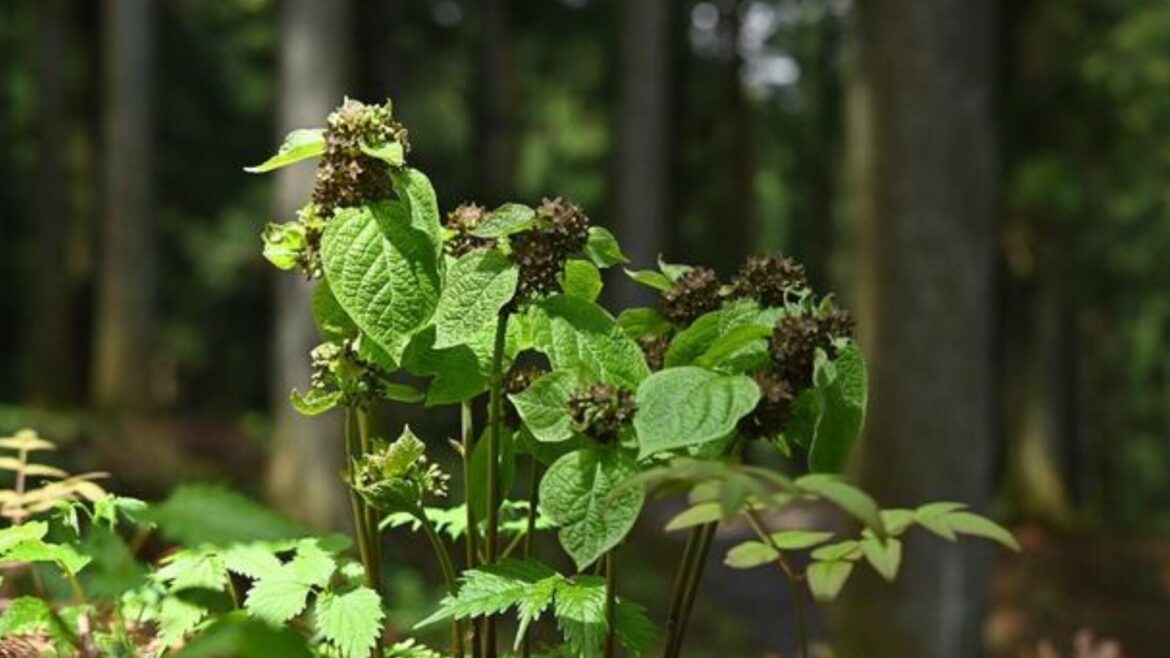For the first time ever, it has been documented that a plant mimics the smell of injured ants to attract flies for pollination.
This interesting evidence of floral mimicry has been observed in Vincetoxicum nakaianum, a newly described dogbane species native to Japan.
The University of Tokyo found that the flowers of this plant species release a scent that is almost identical to the odor of ants under attack by spiders.
As the flies are drawn to the plant’s scent in search of food, they inadvertently pollinate the flowers.
 The grass fly visiting the flowers (A) and the kleptoparasiting spider hunting ant (B). Mochizuki 2025
The grass fly visiting the flowers (A) and the kleptoparasiting spider hunting ant (B). Mochizuki 2025
Unexpected discovery
The discovery led by Ko Mochizuki was a result of a serendipitous observation.
While working on a different project, he noticed chloropid flies swarming the flowers of Vincetoxicum nakaianum.
Drawing on his previous knowledge of fly behavior and similar plant studies, he hypothesized that the flowers were mimicking injured insects.
“That moment, when I saw the flies on the flowers, was truly one of inspiration,” Mochizuki recalled in the press release.
“A hypothesis suddenly taking shape. This experience taught me that unexpected discoveries often emerge from a combination of preparation and chance,” Mochizuki added.
Some flowers, much like freshly baked bread, use scent to attract their visitors, like grass flies.
The chloropid flies are drawn to the scent in search of an easy meal, and in the process of moving from flower to flower, they pollinate the plants.
These flies typically feed on the fluids of injured ants, a phenomenon called kleptoparasitism.
Although ant mimicry has been observed in many other invertebrates, this is the first documented case of a plant using it to attract pollinators.
“Because ants are one of the most widespread species, and ant mimicry has independently evolved in many invertebrate species, it stands to reason that plants could have also evolved to mimic ants in one way or another,” the team noted.
Organisms are known to mimic ants for protection and predation. Many predators avoid ants because they are unpalatable or aggressive. Interestingly, other species can deter these predators by mimicking ants.
In addition, some organisms use ant mimicry as camouflage to infiltrate ant colonies.
The study process
The researchers’ first step was to systematically observe what insects visited the flowers and then compare the flowers’ scent to the smells of various insects.
The initial research showed that the plant’s scent was a close match to that of ants attacked by spiders. However, there was no official scientific evidence that chloropid flies are attracted to injured ants.
To strengthen his hypothesis, Ko Mochizuki turned to social media, where he found numerous amateur naturalists who had documented this exact phenomenon.
This unconventional evidence gave him the confidence to proceed with behavioral tests, which ultimately confirmed that the flies were more attracted to the smell of attacked ants than to other scents.
After this discovery, Mochizuki is already planning his next research project.
He intends to study the evolution of ant mimicry by comparing Vincetoxicum nakaianum to its close relatives, focusing on their pollination systems, evolutionary history, and genetic makeup.
The researcher also plans to expand his search for other examples of mimicry in different plant species, believing that many more forms of floral mimicry remain hidden, waiting to be discovered.
The findings are published in the journal Current Biology.


AloJapan.com